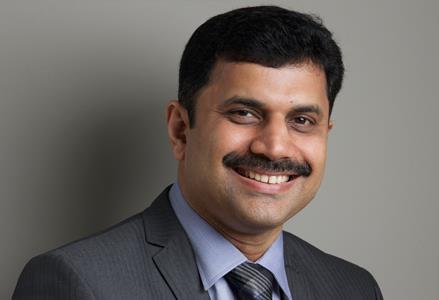|
|

|
|

| Article / Health / Bone Diseases | Post Comments |
OSTEOPOROSIS – Action should be now! |
|
| By : Aster Medcity , Kochi , India 17.10.2017 Phone:0484 669 9999 Mail Now | |
| Kuttisahib Road, Near Kothad Bridge, South Chittoor, Cheranalloor, Kochi, Kerala 682027 | |
 Dr. Vijaymohan S Lead Consultant Orthopaedic SurgeonAster Medcity, Kochi Osteoporosis...is becoming the silent killer of the time. The word doesn’t sound very scary, but the condition can have dangerous consequences. Globally one in every three women and one in twelve men over the age of 50 years suffer from osteoporotic fractures. Estimates suggest that of the Indian population over the age of 50 years, around 20% or 46 million are women with osteoporosis. It is really alarming to know that more than 10 million cases are reported in India every year. Osteoporosis takes a huge on the person and on the society, both physically and economically. It has the potential to make the person immobile and lead to a slow death. But there is a lot of ignorance about the disease. It is to combat with this ignorance that World Osteoporosis Day is observed every year on October 20, to raise global awareness of the prevention, diagnosis and treatment of osteoporosis and metabolic bone disease. What is osteoporosis? It is a condition of the bones where they become fragile and susceptible to fracture easily. The fragility results from decrease in the density of the bone. There is reduced bone mass and disruption of bone architecture. The bone becomes abnormally porous and compressible like a sponge. It is commonly seen in women after the age of 40 and the prevalence increases with age. Osteoporosis eludes diagnosis because it can be present without any symptoms
until there bone is fractured. So it is often called a silent disease. A person
can’t feel his or her bones weakening. Bones affected by osteoporosis can break with a minor injury that normally would not cause a bone to fracture. Osteoporotic bones can break even as a result of a minor fall, a bump, a sneeze, or a sudden movement. Fractures caused by osteoporosis can be life-threatening and a major cause of pain and long-term disability. The fracture can be in the form of cracking or breaking as in a hip fracture or collapsing or compression as in the case of a vertebra. The common areas for fractures from osteoporosis are the spine, hips, ribs and wrist. But osteoporosis related fractures can occur in almost any skeletal bone. These fractures are associated with a lot of pain, suffering, disability and even death in some patients. Risk Factors Factors that contribute to a high prevalence of osteoporosis include low calcium intake with extensive prevalence of Vitamin D deficiency, increasing longevity, sex inequality, early menopause, and genetic predisposition, lack of diagnostic facilities and poor knowledge of bone health. Apart from these factors, some health problems may also increase the chances of developing osteoporosis. These include autoimmune disorders like Rheumatoid Arthritis, gastrointestinal disorders like Coeliac disease, breast or prostate cancer, nervous system disorders like Parkinson’s disease or Multiple Sclerosis and bone marrow disorders like Thalassemia. Weight loss surgery and procedures such as gastrectomy can also increase the risk of developing osteoporosis. The bone always degenerate is a particular rate. So the more bone you build up in body will ensure enough strength to withstand injuries when they decay. So the best way to prevent osteoporosis is to put an effort to increase your peak bone mass – that is the maximum bone mass you can attain at the peak of your bone growth. This happens at or around 25-30 years. For that you need to have a healthy life style, healthy food rich in calcium and minerals, enough sunlight exposure, and a daily exercise regime. It is like a bank deposit. The more you deposit the more interest you get in old age. Diagnosis High index of suspicion and awareness is important in the diagnosis and management of osteoporosis. An early diagnosis enables treatment to be started and reduces the risk of fractures. Bone mineral density tests (BMD) shows how dense bones are and whether osteoporosis is present. The most common test is dual energy X-ray absorptiometry or DEXA that measures spine, hip or total body bone density and helps gauge fracture risk. Other methods to check bone density include ultrasound and quantitative computed tomography (QCT). Bone densitometry is a test like an X-ray that quickly and accurately measures the density of bone. Treatment First line therapies are supplementation with calcium, vitamin D and bisphosphonates. Hormone replacement therapy, estrogens agonists, calcitonin, parathyroid hormone and denosumab can also be used based on the response and requirements. To conclude, a lot of people think that osteoporosis and bone loss is simply a normal part of getting older. But this is not true. Osteoporosis is a preventable and treatable disorder. In this World Osteoporosis Day, let’s resolve to take early action to protect our bone and muscle health, so we can enjoy a good quality of life and independence in future. |
|